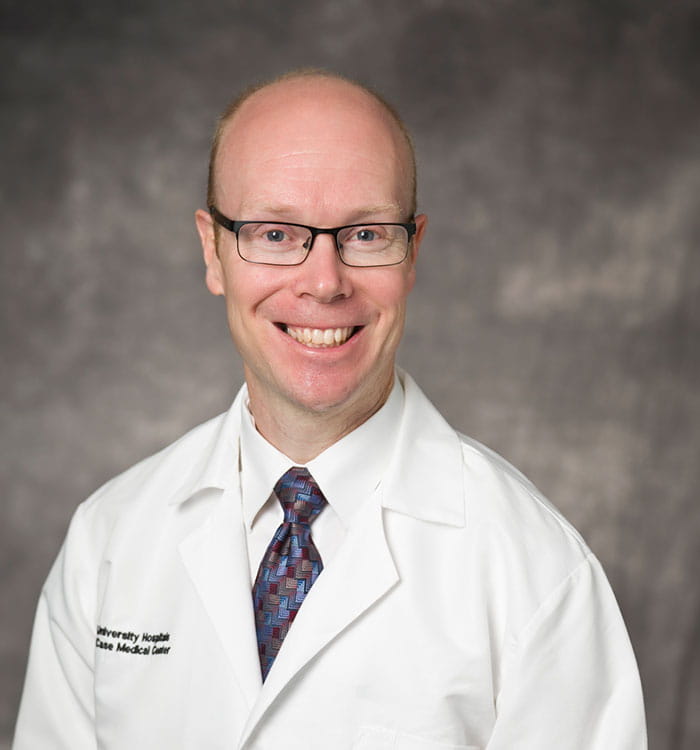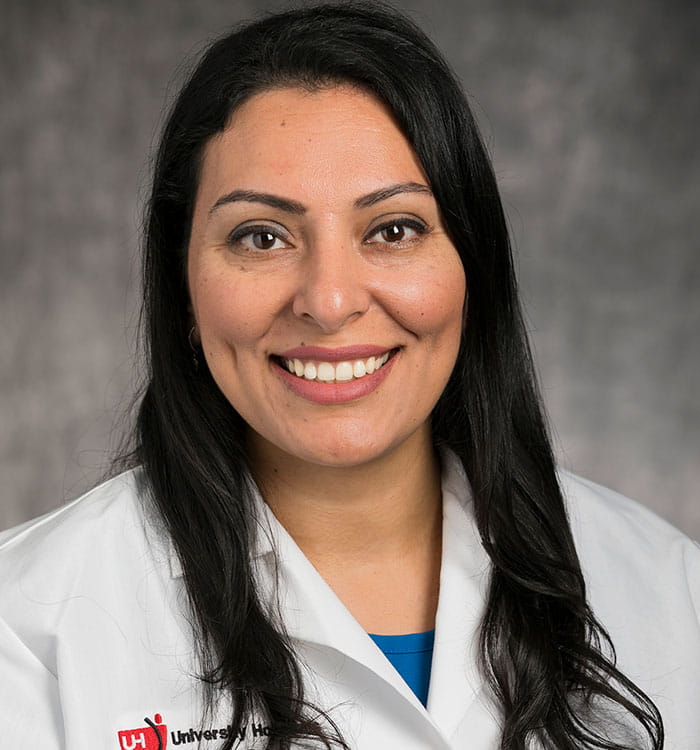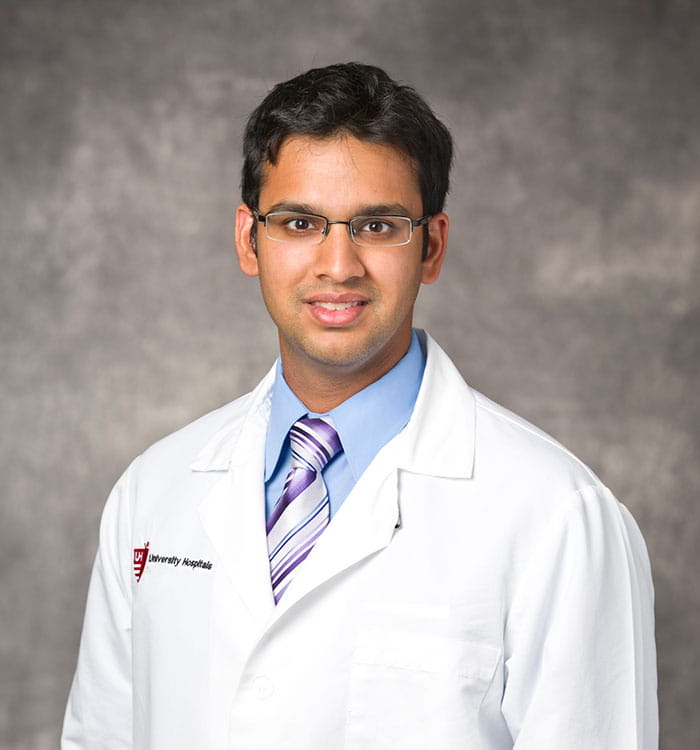UH Rainbow Plays Leading Role in PATS Trial Addressing Childhood Snoring
February 20, 2024

Results recently published in JAMA
Innovations in Pediatrics | Winter 2024
Innovations in Ear, Nose & Throat | Winter 2024
Eleven years ago, pediatric sleep medicine specialists published the results of the CHAT (Childhood Adenotonsillectomy Trial) trial in the New England Journal of Medicine, with UH Rainbow’s Carol Rosen, MD, among the primary authors. It found that among school-age children with obstructive sleep apnea (OSA), surgical treatment did not significantly improve attention or executive function, while it did reduce symptoms and improve behavior, quality of life and sleep study parameters.
However, CHAT left out about half of all children who are candidates for adenotonsillectomy, but have only infrequent respiratory events, not meeting full criteria for OSA, - the so called “mild sleep disordered breathing” group, which included those who habitually snored. Plus, it didn’t include children under the age of 5, who may be more sensitive to sleep disturbances than older children may be.
 Todd Otteson, MD, MPH
Todd Otteson, MD, MPHThe Pediatric Adenotonsillectomy Trial for Snoring (PATS) trial was designed to address these issues, measuring the effectiveness of adenotonsillectomy in children with only mild sleep-disorder breathing and in a wider age range. “The PATS trial was unique in its utilization of surgery in children with only mild-sleep disorder breathing and sought to answer an important clinical question about whether tonsillectomy and adenoidectomy plays a role in this population” observed study co-author Todd Otteson, MD, MPH, Chief of Pediatric Otolaryngology at UH Rainbow Babies & Children's Hospital and UH Ear, Nose & Throat Institute. He noted that “the results of the study help frame discussions about tonsillectomy with patients and families so informed, data-driven decisions can be made.” Its results are now out, published in JAMA.
Secondary Outcomes Key
 Sally Ibrahim, MD
Sally Ibrahim, MD Jay Shah, MD
Jay Shah, MD“The PATS trial results highlighted changes from the intervention group in secondary outcomes, but not the primary ones,” says study co-author Sally Ibrahim, MD, Medical Director of the Sleep Laboratory at UH Rainbow Babies & Children's Hospital and Medical Director of the Pediatric Sleep Center at UH Cleveland Medical Center. “The PATS trial described improvements in some of the secondary outcomes, which are often the reasons that parents seek treatment in our pediatric otolaryngology clinic” noted Jay Shah, MD, Director of the Aerodigestive Center at UH Rainbow Babies & Children's Hospital and another pediatric ENT surgeon co-author on the study. “The PATS trial is especially important because it confirms with the data what ENT surgeons and parents suspected about their children’s sleep pattern.”
Among the 458 children in this multicenter, single-blind, randomized trial, treated at UH Rainbow and six other sleep centers around the country, Dr. Ibrahim and her colleagues found no significant differences in the primary outcomes of executive function or attention between those who received an adenotonsillectomy and those treated with a “watchful waiting” approach. However, as with the CHAT trial, that was not the whole story.
“Behavioral problems, sleepiness, symptoms and quality of life each improved more with adenotonsillectomy than with watchful waiting,” the research team writes in JAMA. “Adenotonsillectomy was associated with a greater 12-month decline in systolic and diastolic blood pressure percentile levels and less progression of the apnea-hypopnea index (AHI) to greater than three events per hour, with 1.3% of children in the adenotonsillectomy group compared with 13.2% in the watchful waiting group.”
“The secondary outcomes did show some clinically important changes, including changes in behavior and a change in blood pressure, which are very important to my practice,” Dr. Ibrahim says.
Implications for Practice
Dr. Ibrahim says the PATS findings do help provide some clarity for physicians making recommendations to families on adenotonsillectomy for their child.
“If their child is breathing better and their behavior is better, that’s a big deal for parents,” she says. “If blood pressure can improve, that’s a huge deal. If we can make a difference with adenotonsillectomy in those who are symptomatic, despite having milder forms of breathing disturbance, we may be helping them. We need more data on which patients with milder problems benefit from surgery.”
However, there is still much to be learned about the ideal approach to these patients, she says. Future sub-analyses of the PATS data, for example, will examine whether using a patient’s symptoms rather than sleep study results yields different findings.
“Should we be more symptom-based rather than solely sleep study-based?” she says. “This study is provoking some additional questions. The utility of sleep studies is another question that’s going to come up, which is a very intriguing one. Also, is our early intervention for milder problems going to provide longer-term benefits out of the scope of this study? Are children not showing us things in their executive function with milder breathing disturbances? We see so many positive changes in other domains outside of executive functioning. Perhaps there are milder changes that are occurring that may be signaling the need for intervention.”
Drs. Ibrahim, Otteson, Shah and their colleagues will continue pursuing these and other questions, seeking to understand which children benefit most from adenotonsillectomy – and why.
“Future research is needed to develop easy-to-use screening instruments for identifying which children are more likely to benefit from adenotonsillectomy compared with watchful waiting,” they write.
For more information about the PATS trial at UH Rainbow, email Peds.Innovations@UHhospsitals.org.
Contributing Experts:
Sally Ibrahim, MD
Medical Director, Sleep Laboratory
UH Rainbow Babies & Children's Hospital
Medical Director, Pediatric Sleep Center
UH Cleveland Medical Center
Assistant Professor
Case Western Reserve University School of Medicine
Todd Otteson, MD, MPH
Chief, Pediatric Otolaryngology
UH Rainbow Babies & Children's Hospital
Vice Chair for Faculty Affairs
UH Ear, Nose & Throat Institute
Professor of Pediatrics and Otolaryngology
Case Western Reserve University School of Medicine
Jay Shah, MD
Pediatric Otolaryngology
UH Rainbow Babies & Children's Hospital
UH Ear, Nose & Throat Institute
Associate Professor of Pediatrics and Otolaryngology
Case Western Reserve University School of Medicine
Rev3/8/24


